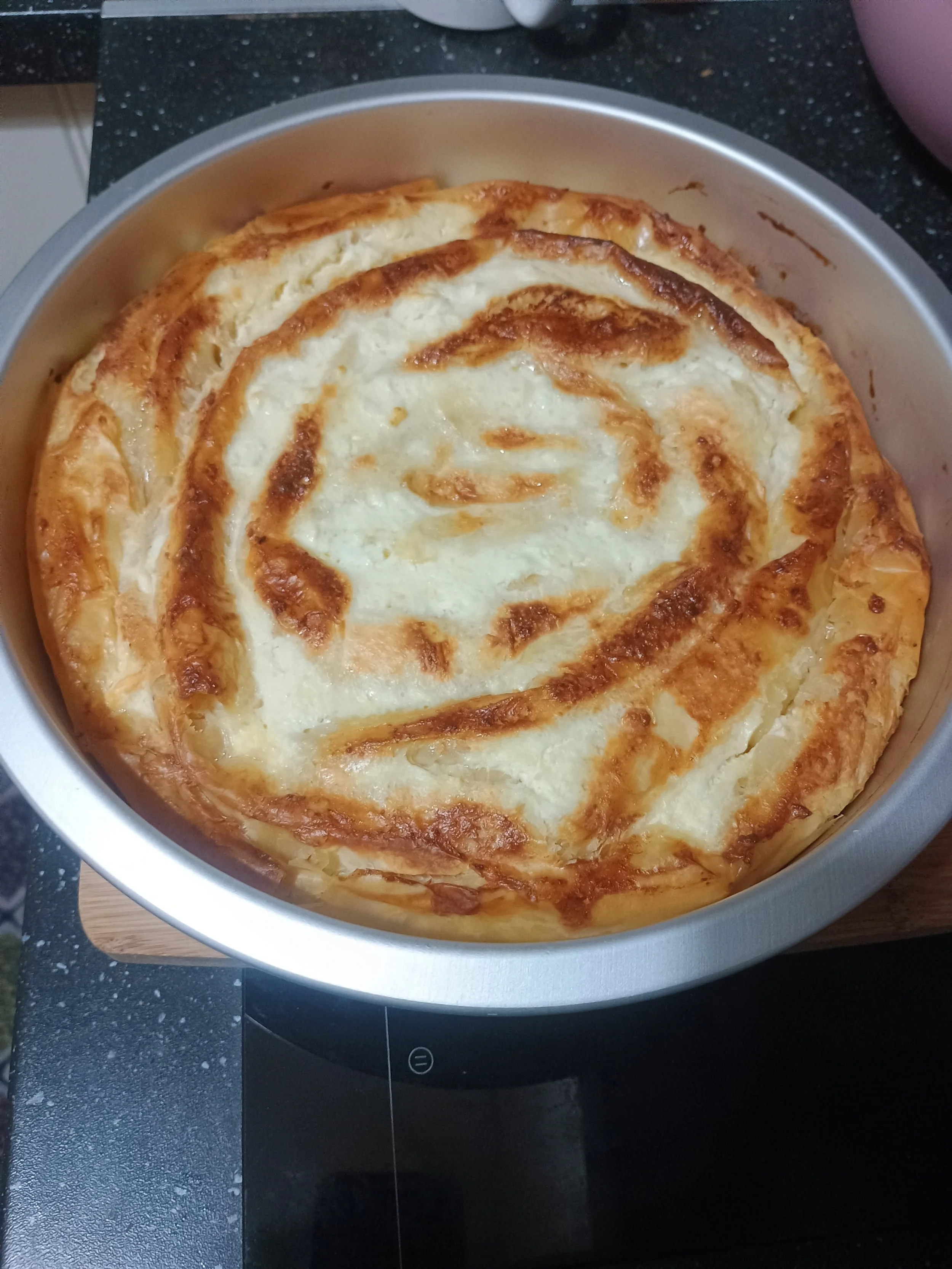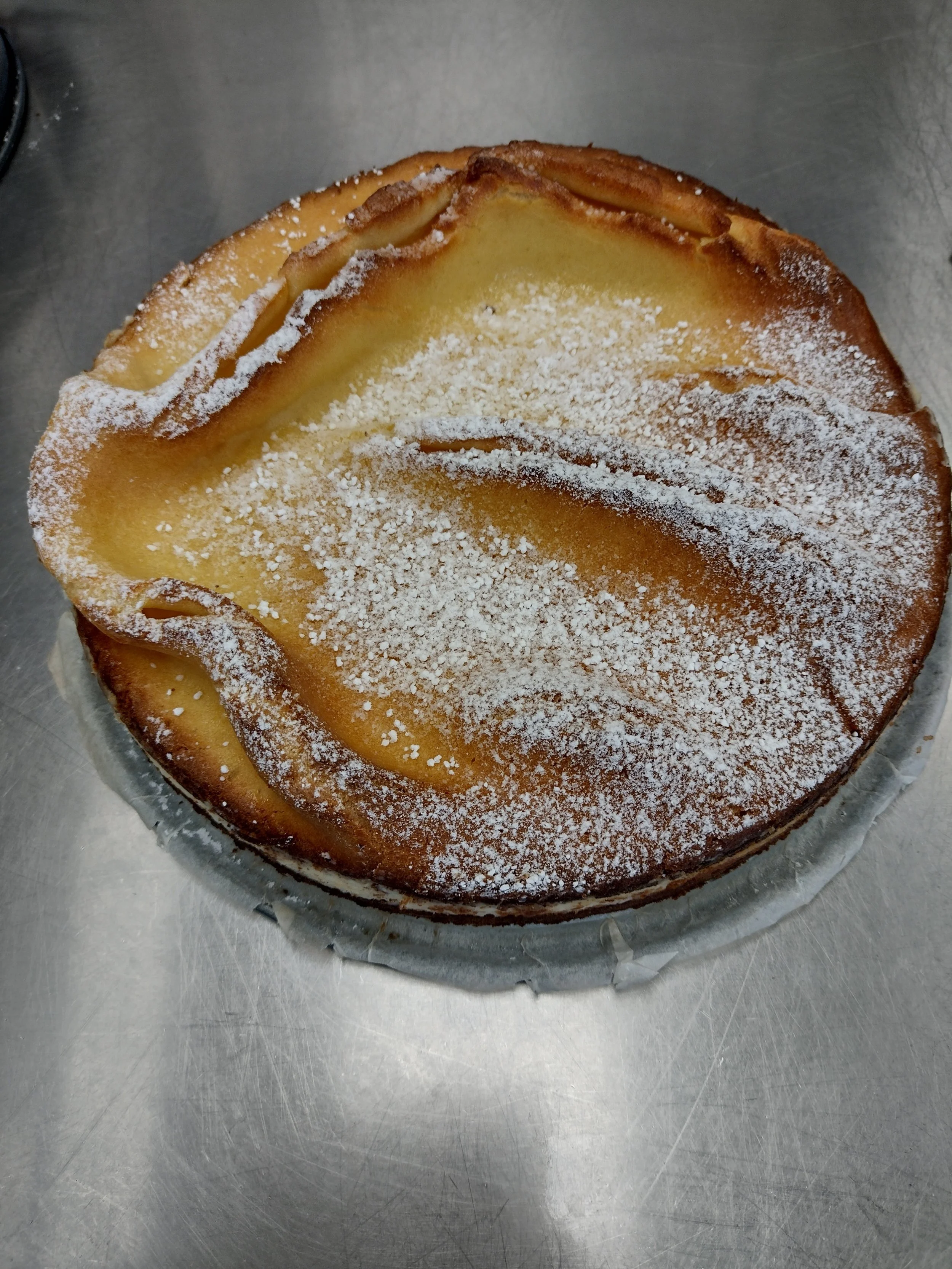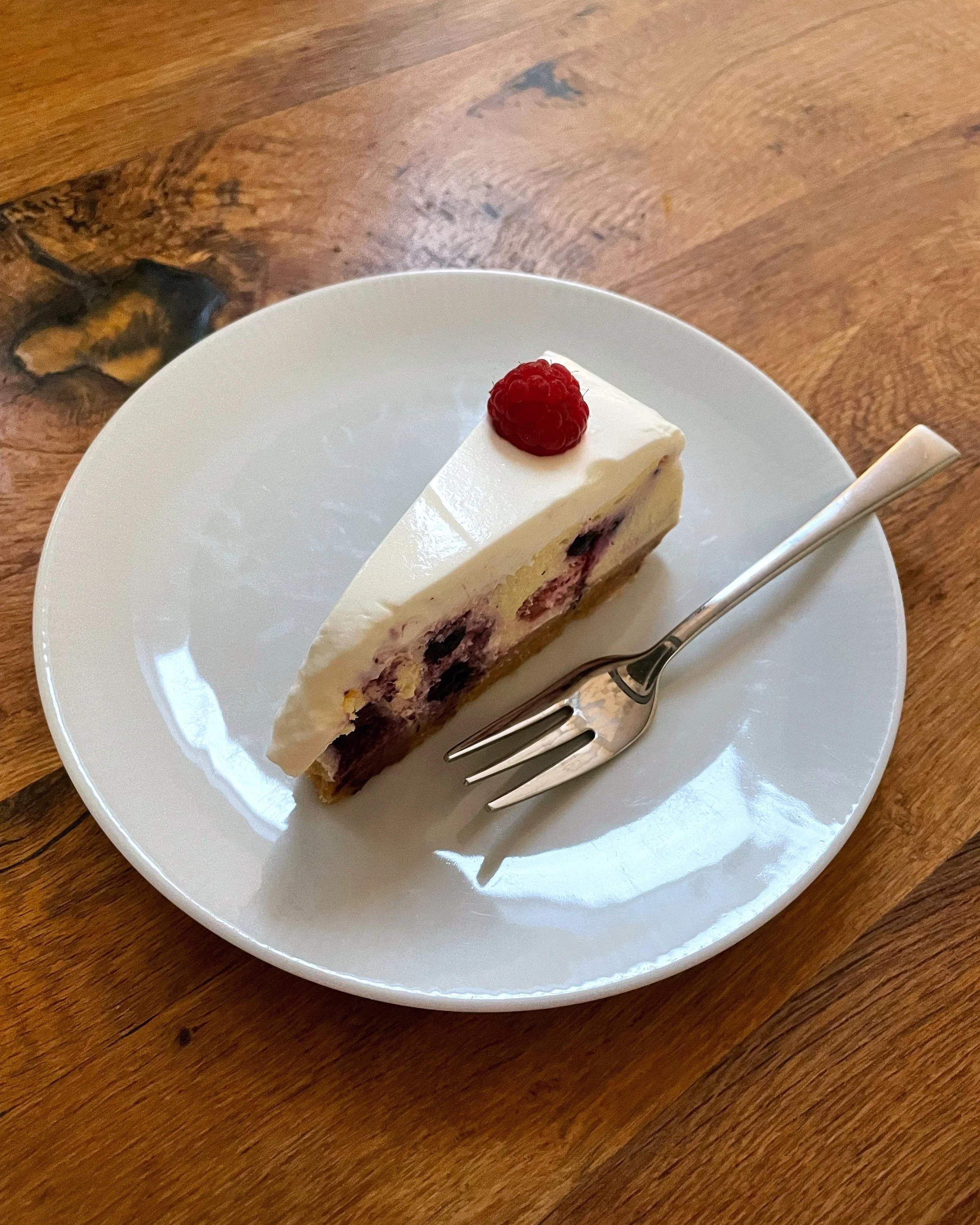This is my fifth sweetest post...
The fusion of New Yorker Cheesecake and mousse of raspberries with some real flowers bring a real rezeptor explosion that I never expected to this extent…..
This is my forth salty post
Creating a salty pastry was my next idea. it is a quite simple but tasty. I found the best components and with some love it turned to my first try to create something salty, at the same time a basic one but exactly this made it much more challenging to find a way to do it more tastier and with the ambition to be not only good looking but also a very tasteful pastry creation by developing my own signature recipe…
Banitsa is a traditional pastry made from thin layers of puff dough. Home banitsa is an essential part of the Bulgarian tableful. On holidays a “lucky coin” is baked inside: it is wishes, written on paper and wrapped in foil or a piece of dogwood with berries.
Traditional filling is white cheese (sirene/сирене) there are also options with spinach (spanachnik/спаначник), pumpkin (tikvenik/тиквеник), herbs (zelnik/зелник), potatoes (patatnik/пататник), onions (luchnik/лучник), fish and meat. The shape also differs: spiral banitsa is called “sviwnik/свивник”, layered like lasagna “nalozgena/наложена” banica.
Where does this name come from?
It is believed that the name comes from an ancient Slavic word «гъѫбнти» which means «bend or fold». In Bulgarian language, the word «banitsa» can also be used as a synonym of wrinkled or rumpled. For example, a teacher may blame a student for the appearance of his exercise book by comparing it with a banitsa.
Similar types of pastry can be easily found in the neighboring countries: spinach pie in Greece (spinakopita/σπανακόπιτα), gibanitsa in Serbia, börek in Turkish cuisine, burekas in Israel (בורקס), bugatsa in Macedonia, achma in Georgia (აჩმა), cheburek in Kazakhstan (çiberek). All these baking options are united by puff pastry “philo”, prepared same way.
This is my third post
This s my first try to make cake with a chocolate layer.
It is even harder the third …
It is my first try to make cake with a chocolate layer …….
This stunning Chocolate raspberry mousse cake… The airy chocolate sponge layer, topped with fresh, smooth raspberry mousse make this a refreshingly light mousse cake highlighting raspberries in all their glory…
This is my second post
Being number two is hard...This delicious choux pastry pie has a divine crème mousseline filling. It was created as an ode to the Carpathian mountains in Poland and has a signature ridged detail and powdered sugar on top that resembles snow.
Being number two is hard...This delicious choux pastry pie has a divine crème mousseline filling. It was created as an ode to the Carpathian mountains in Poland and has a signature ridged detail and powdered sugar on top that resembles snow.
hi there!
My name is Emo and I like to bake sweet things.
Hi! Nice to meet you, my name is Emo and I love to bake different sweet goods.
It is 5 years since I made my first baked New York-style cheesecake…
When some people think of the humble cheesecake they think of the United States and in particular New York, however the history of cheesecake dates back thousands of years (some say up to 4,000 years ago), with its origins going back to ancient Greece.
The earliest known mention of “cheesecake” (plakous meaning “flat mass”) dates back to ancient Greece. It is believed to have originated on the Greek island of Samos. Physical anthropologists unearthed cheese molds there dating back to around 2,000 B.C. While cheese and cheese-related products likely existed for millennia before this discovery, records from periods earlier than this delve into prehistory, before the advent of written language, leaving much to speculation. In ancient Greece, cheesecake held a revered status as a source of energy, evidenced by its provision to athletes during the inaugural Olympic Games in 776 B.C. Additionally, Greek newlyweds often celebrated their nuptials with cheesecake, which was fashioned from basic ingredients such as flour, wheat, honey, and cheese, pounded smooth into patties, then cooked on an earthenware griddle.
In 230 A.D., Greek philosopher and historian, Athenaeus, is credited for documenting the process of making cheesecake in his writings. (By this time, the Greeks had been serving cheesecake for over 2,000 years but this is the oldest known surviving Greek recipe.) These ancient Greek cheesecakes were likely made with simple ingredients such as cheese, wheat flour, and honey, baked on a crust.
There are four fundamental types of cheesecake, with the type and even the brand of cheese influencing both texture and flavor: Curd-based cheesecake, encompassing varieties like farmer’s cheese, pot cheese, or cottage cheese; ricotta cheesecake, synonymous with the Italian tradition; quark cheesecake, representative of German cuisine; and cream cheese cheesecake, famously associated with New York-style cheesecake. Furthermore, an unbaked, chiffon-like rendition of cheesecake exists, known as French cheesecake.









